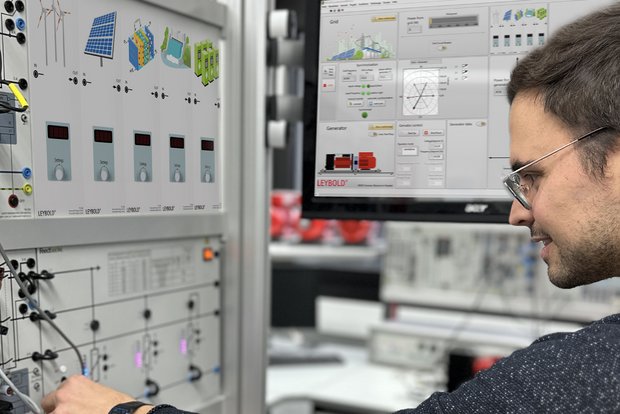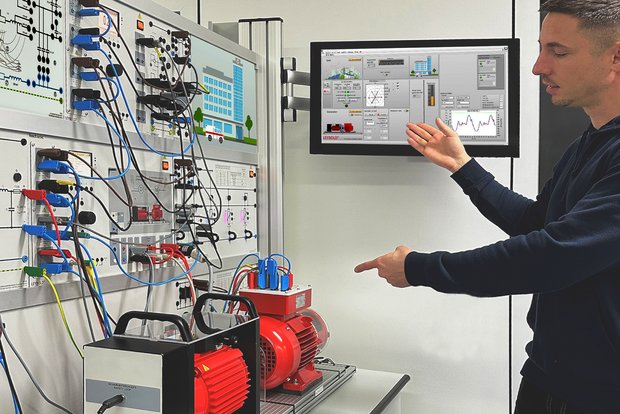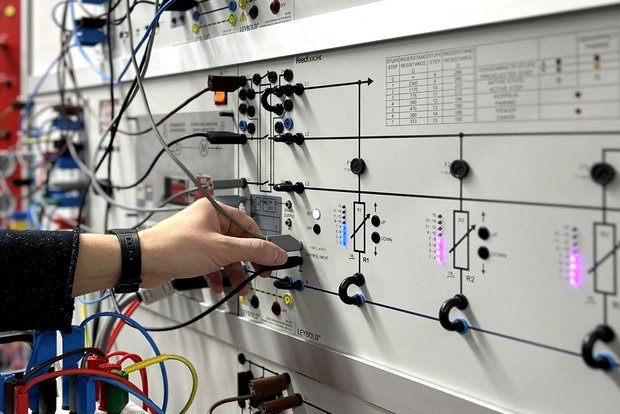Action-orientated learning with realistic scenarios
We understand that the effective teaching of complex smart grid concepts requires more than just textbooks and lectures. Our system enables trainees and students to gain deep insights into realistic smart grid scenarios through hands-on learning. They learn to act on real measurement data and avoid mistakes while creatively testing different solutions and developing their own strategies in realistic scenarios. This practice-orientated approach is reinforced by linking theory and practice: specialist theoretical content is deepened through experiments with interactive, digital instructions. In this way, trainees and students gain a deep understanding of smart grid systems that goes beyond mere specialised knowledge and prepares them for real-life professional challenges.
Smart grid elements
Every component of a smart grid - from energy generation to transmission, storage and consumption - is covered by our modular smart grid training system. In the area of energy consumption, trainees and students learn to simulate complex consumer loads, such as households or cities, using robust resistive, inductive and capacitive loads in order to generate load situations that change over time. Energy generation is trained with the LD Smart Grid both conventionally and with renewable energies, thus promoting a holistic understanding of sustainable energy concepts. Energy transmission and storage are also trained in practice, with trainees and students learning how to avoid overloads and react to grid disruptions. They learn how to use storage technologies to efficiently store surplus energy and feed it back into the grid when required. This training ensures a deep understanding of the management of smart grids.
Didactically prepared CASSY SCADA
CASSY SCADA combines all essential data streams from energy producers and consumers in the grid for smart monitoring and control. All status information and load flows are displayed and processed in real time. This enables students to develop an in-depth understanding of the dynamics of a smart grid.
The software, which is based on the LabView development environment used in laboratories worldwide, is characterised by its user-friendliness. It is not only used to monitor a large number of parameters, but also enables the active control of smart grid scenarios. This gives trainees and students the opportunity to intervene directly in the complex processes of energy distribution and control.
Flexibility and expandability
Our modular training system is designed to grow with your requirements. Starting with the basics, the Smart Grid System can be expanded at any time and trainees and students can move on to more in-depth and complex topics. This flexibility guarantees long-term relevance and the continuous development of students' skills. The CASSY SCADA system can also be configured and expanded independently. This makes it possible to create new experiments and scenarios or even integrate your own hardware into the system.
Example scenario: Power failure in a hospital
A power failure in a hospital is a critical event that requires efficient and structured action. In our training scenario, trainees and students experience the challenges and solutions for such an incident. They learn how to quickly recognise a blackout and initiate the necessary measures. The management of the emergency power supply from a diesel generator in the event of fluctuating load requirements is trained, as is the safe reconnection of the hospital to the public power grid. Further learning objectives include switching off the generator, ensuring stable grid operation, parameterising the generator, synchronising grids and understanding frequency and voltage stability. This scenario prepares learners for critical situations in practice and provides them with the necessary knowledge for efficient and safe handling.





